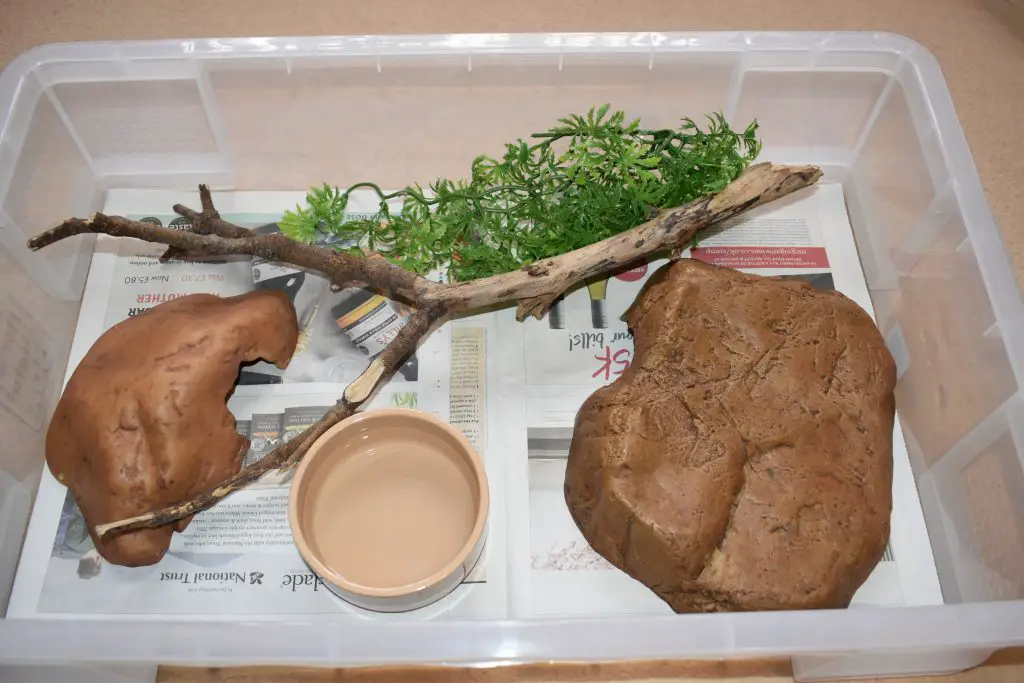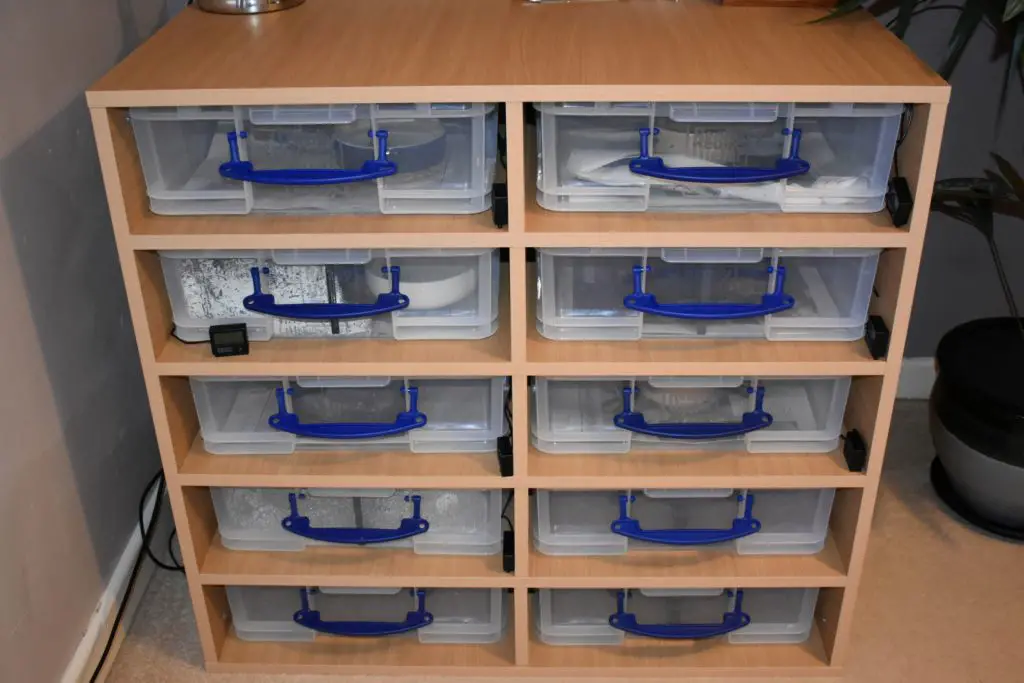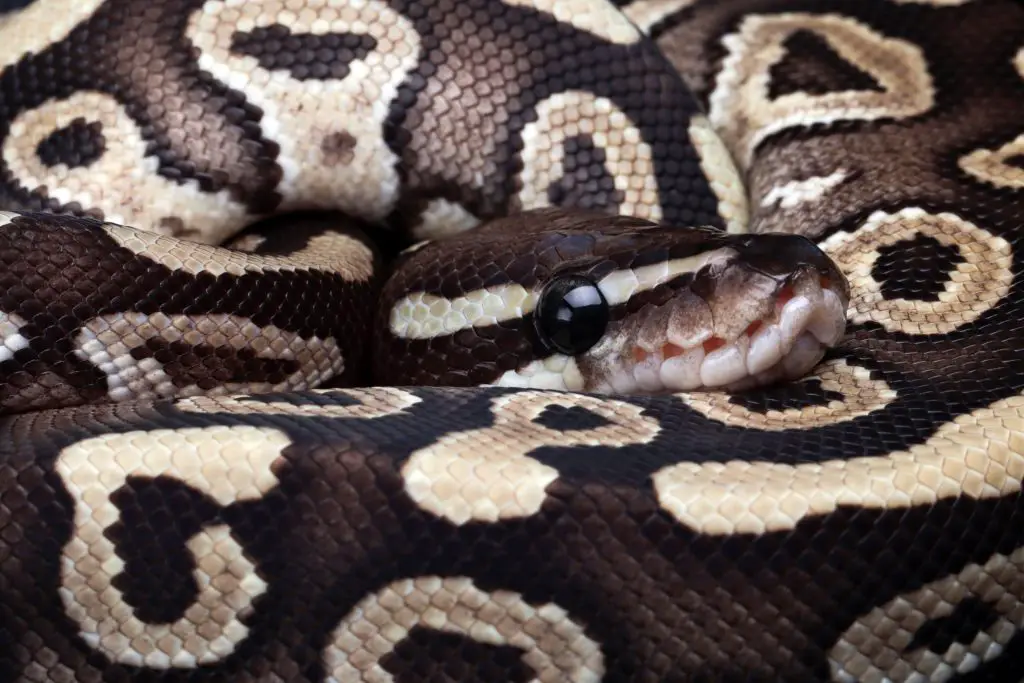First and foremost, it is worth noting that Ball Pythons are generally solitary in nature. In fact, nothing stresses them more than having another, unwanted, conspecific in their enclosure. I have known people who have successfully kept them together but generally, it ends in fights and bullying (or as close as these gentle creatures can get to these behaviours) and results in a poor feeding response from one or more of them.
Whilst it is true that a male and female can be kept together for breeding, it is best to separate them after each successful copulation for at least a couple of weeks, then permanently once breeding is over. Some males will go off food for months if around females during the breeding season, and also harass them relentlessly.
I’ve included a link to a full article at the end of this page if you’d like to learn more about this particular subject. I’ve also added some posts on enclosures in general, so be sure to check them out!
Types of enclosure
These days there are three main types of enclosure available for Ball Pythons:
- Vivariums
- Tubs
- Racks
In the reptile community, there is a huge debate of which is best. More often than not, I find that most online resources are suggesting that the “best” option is the most expensive one. How weird is that?
At the same time, you have some hobbyists practically frothing at the mouth if you tell them you keep your Ball Pythons in tubs. Personally, I’m not entirely sure why a tub would be any worse than a vivarium, if it’s the same size and appropriately setup? Then again, I guess my zoology background might be make me boringly logical…
Anyhow! Let’s take a quick look at each type of enclosure, then you’ll have a little more information available to make your own choice.
Vivariums
Vivariums are the type of housing that is the most aesthetically pleasing and usually the most spacious. Generally, the wooden back comes with some pre-drilled holes so you can put probes and heating appliances inside. The downside is that the wooden base is too thick for you to use a heat mat from underneath. If a mat is your preferred heating method, it needs to be placed in a special holder for safety, and be used inside the vivarium.
This easily resolved issue leads many people to mistakenly think that you absolutely have to heat vivs’ with bulbs or ceramic heat emitters, both of which dry out the air and make maintaining humidity more difficult. Another issue that I have with vivariums is that they offer the snakes little privacy. The glass fronts can leave some (not all) Ball Pythons feeling exposed and more sensitive to disturbance. The easiest solution for this is hanging a drape over the front – defeating the purpose of having a beautiful vivarium!

Plastic tubs
Plastic tubs have the upside of being excellent at maintaining humidity, but the downside of being unsightly. The main issue with tubs though is that it can be hard to find ones that are big enough, yet are see-through and have a secure, locking lid. If big enough, tubs do work well, it can just be difficult to obtain an appropriately sized one for a 5 or 6lb (2.5KG) female! One important benefit that tubs offer is that they are non-porous and very easy to clean and disinfect, something that makes hygiene easier if you have several animals.
Once again, hanging a drape over the top of these enclosures can help make the snakes feel more secure – make sure the drape allows light to pass through though, we want to give them privacy, not total darkness.
Below is a plastic tub that I made into a basic example enclosure for this article. It gives you a rough idea of how a Ball Python enclosure should look: two hiding places, a heavy water bowl and a branch for climbing. Given that Ball Pythons are positively thigmotactic – it’s vital that you do provide hiding places.
simple setups like this are great for baby Ball Pythons, but you can also make larger ones for adults. Tubs can be as elaborate as you like, and are in no way inferior to other options if you take the time to add some decorations and clutter.
The one below, for example, would instantly look nicer with Coco chips for substrate. That said, just how it is would be more than enough to keep a young Ball Python.

Racks
Rack systems are plastic drawers in a stack, generally a few draws wide and as many high. Whilst they have the benefit of easily maintaining the correct temperature and humidity, the drawback is that the small size of the draws in some racks impedes the expression of an adult Python’s natural behaviours.
That said, racks easily provide enough space to correctly house hatchlings, in which case they are an appropriate and convenient type of housing.
For adults, it’s important to find a rack that is large enough for them, even if it’s a little more expensive. Personally, I prefer V70 for adults if a rack is used. Despite the fact that there is a growing number of people who consider racks cruel, Ball Pythons do seem to feed more consistently in them. In fact, they seem to breed better, shed better, and suffer less from stress in them too…
Personally, I don’t always produce more than one clutch a year, so I’m not pushed for space or particularly fussed about making a profit. I only keep a few animals and this allows me to invest more space and money in them than someone who has a large collection. A large-scale breeder would not be able to provide large tubs or vivariums for hundreds of animals, it’s just not possible.
In my opinion, racks are fine for breeders, but larger, well thought-out tub setups are best for individuals who can invest more time.

How big should a Ball Python enclosure be?
A Ball Python needs two hides (or more) that it fits into snugly, a decent-sized water bowl and some additional floor space to move around and stretch out. If the hides occupy more than 40% of the enclosure, then it is too cramped. Neonates do not tend to do well in very large enclosures and size should be adjusted as they grow.
Here are some general guidelines for minimum enclosure sizes:
- Hatchlingswill need a 12 inch (30cm) long vivarium/terrarium, a 5-10 US gallon (19-38 litre) glass tank, or a plastic tub with equivalent floor space.
- Yearlings/subadults will need an 18-24 inch (45-60cm) long wooden vivarium/terrarium, a 15-20 US gallon (19-38 litre) glass tank, or a plastic tub with equivalent floor space.
- Adults will need a 3-4 foot (90-120cm) long wooden vivarium, a 40-50 US gallon (151-190 litre) glass tank, or a similarly sized plastic tub.
Glass tanks tend to have a higher height to width ratio, so a slightly lower capacity plastic tub can have as much floor space.
Safety and ventilation
In addition to choosing an appropriately sized enclosure, you need to consider two things: safety and ventilation. Did you buy an expensive option for a big brand? Check it over anyway!
Make sure any enclosure you use has a very securely fitting lid, and check it all over for holes. The last thing you want is for your pet to escape and end up on the news like this one in Canada! I’m exaggerating a tad, but you get the idea.
Whilst checking over the enclosure, look carefully for any rough bits or gaps that your snake could push its nose into. As a general rule, snakes will eventually hurt themselves if there is any possible way of doing it!
When it comes to ventilation, any vivarium or terrarium should have at least two air vents already installed. This is essential for avoiding stagnant air and the potential diseases that come with it. If you choose to use a plastic tub, this is less of an issue, as you can simply use a reaming knife or soldering iron to make holes.

More on this subject:
- Can Ball Pythons live together?
- Do Ball Pythons like tubs?
- Are Ball Pythons arboreal?
- How to find an escaped Ball Python
- Why is my Ball Python trying to escape?
Ball Python Care topics:
- Intro
- Enclosure guidelines *You are here
- Bedding and refugia
- Heat and Light
- Humidity, water, and shedding
- Ball Python Size
- Handling
- Diet
- Health and hygiene
- Breeding
- Eggs
